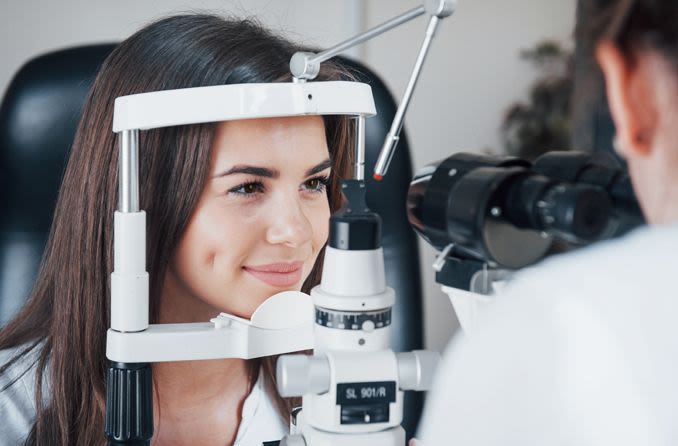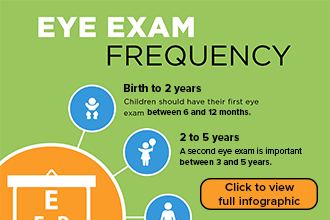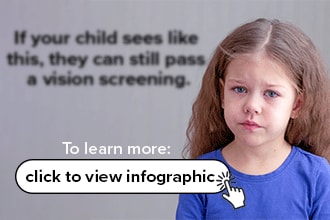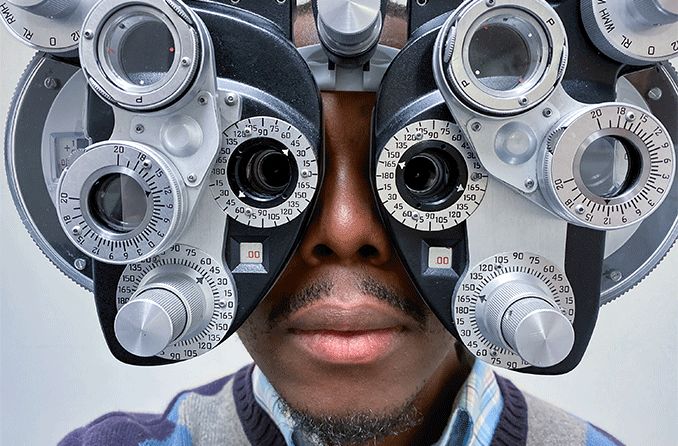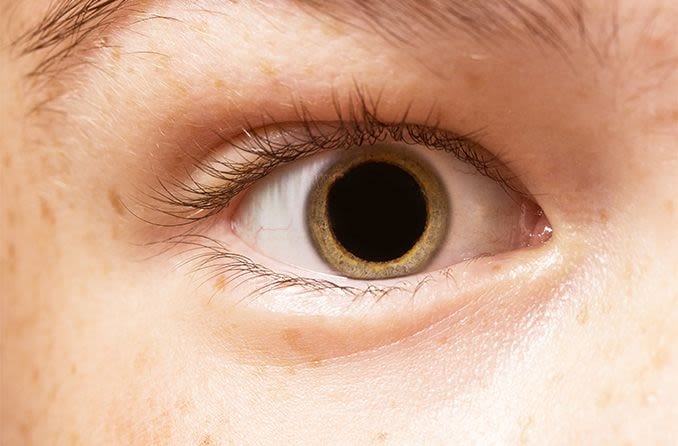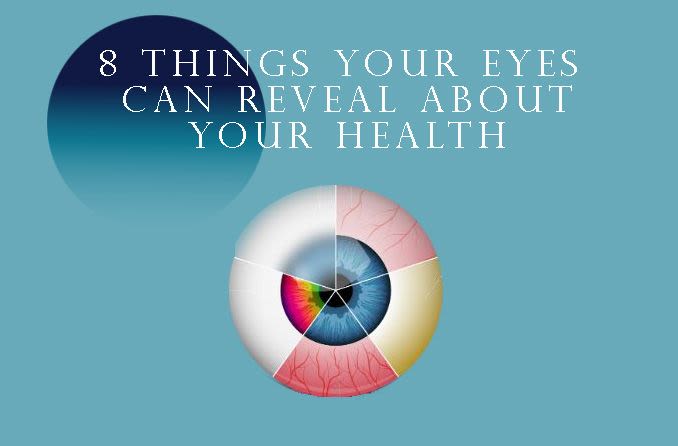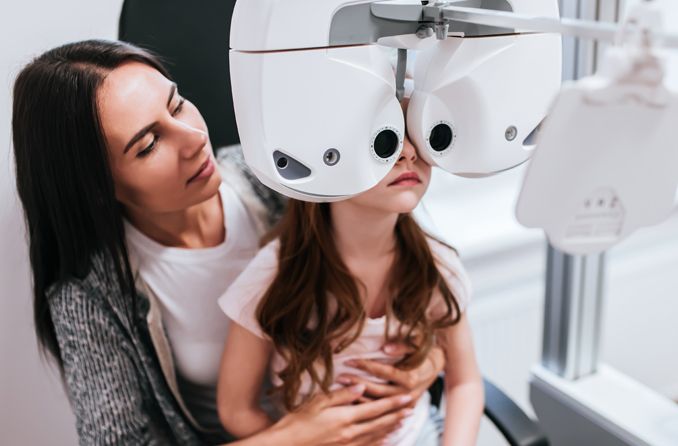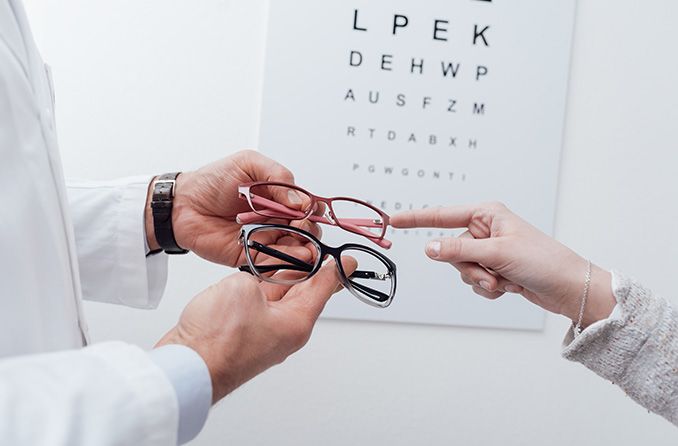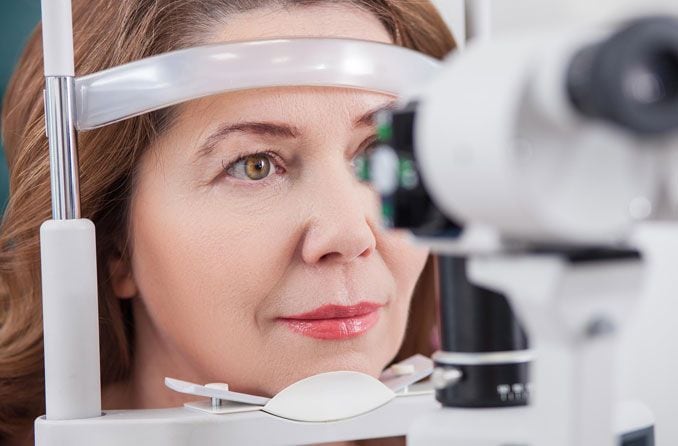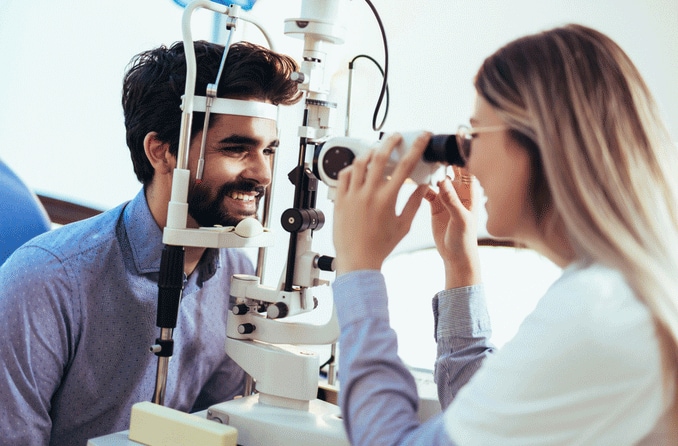Eye care professionals recommend that you have an eye exam every one to two years. This may vary depending on your age, risk factors and whether you wear eyeglasses or contacts. Though vision screenings are sometimes done for kids at school, eye exams are still important.
Vision screenings may find a vision issue in your child, but they aren’t a substitute for a comprehensive eye exam. An exam is more in-depth, can catch problems a screening may miss, and can find the underlying cause behind issues a screening does identify.
How often children should get an eye exam
Experts say approximately 80% of all learning comes from visual pathways. Yet one in four children with a correctable refractive error does not have it corrected properly. A University of Bristol study also discovered that brain-related visual problems likely affect one in 30 school-aged children.
Because of this, it’s recommended that children have their first eye exam at 6 months of age. Another exam should be done at age three and again before the start of first grade. If a child is not at risk, they can continue having their eyes examined every year until age 18.
Children with risk factors for vision problems may need their first eye exam earlier than 6 months of age and may need eye exams more frequently throughout childhood.

Children need regular eye exams to detect vision problems that may interfere with learning.
Examples of risk factors include:
- Family history of vision problems, such as myopia, strabismus, amblyopia, retinoblastoma or a genetic disease that affects the eyes
- Prematurity or low birth weight
- Difficult labor associated with fetal distress
- Extended use of supplemental oxygen at birth
- Infection of mother during pregnancy (examples: rubella, venereal disease, herpes, AIDS)
- Developmental delays
- Functional vision in only one eye
- Maternal smoking, drinking or drug use during pregnancy
- Physical illness or diseases
- Eye disorders such as high refractive error, strabismus and anisometropia
- Health conditions associated with ocular conditions
- Taking a medication with ocular side effects
Children who currently wear eyeglasses or contact lenses should also have annual eye exams.
